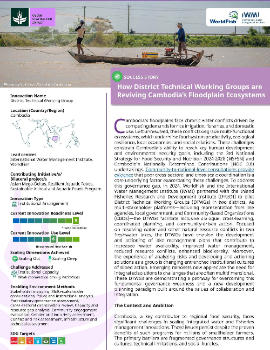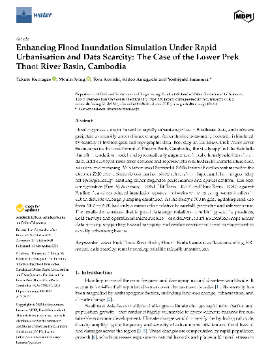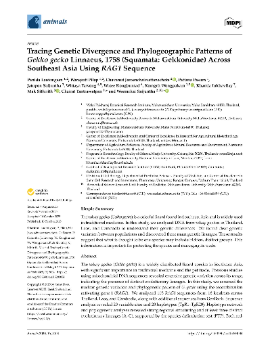
Why does rural resilience for climate-induced migration response matter?
Khmer PDF (62)
Abstract/Summary
Climate-induced migration in rural communities represents a growing challenge for Cambodia socioeconomic development. Climate change leads to water scarcity and adversely affects agricultural production, reducing farmers’ incomes and destroying livelihoods, thus making rural people more vulnerable. The income loss from crop damage caused by extreme weather events is one of the key drivers of migration.
This infographic is based on a study conducted by CDRI researchers in Kratie, Mondulkiri, and Stung Treng provinces during June and July 2023. It illustrates the link between climate change and migration, revealing that climate change is significantly disrupting rural livelihoods. Rural communities face varying levels of exposure to environmental threats. On average, they are most affected by extreme heat (93.33%), followed by strong winds (87.96%), droughts (63.86%), and floods (43.63%). While economic factors (58.53%) remain the primary driver of migration, environmental factors (28.33%) also play a substantial role. The study also found that migration patterns are fairly balanced between genders (51.30% male, 48.70% female), with most migrants seeking opportunities in urban areas and other provinces. Limited access to irrigation (20.86%) and clean water (41.26%) compounds the vulnerability of rural communities to climate impacts.
To enhance rural resilience and reduce climate-induced migration, the authors recommend implementing climate-resilient farming practices, providing Technical and Vocational Education and Training (TVET) programs, and improving irrigation infrastructure. These findings underscore the urgent need for integrated policy responses that address both environmental and socioeconomic challenges, particularly for vulnerable groups in rural communities.



